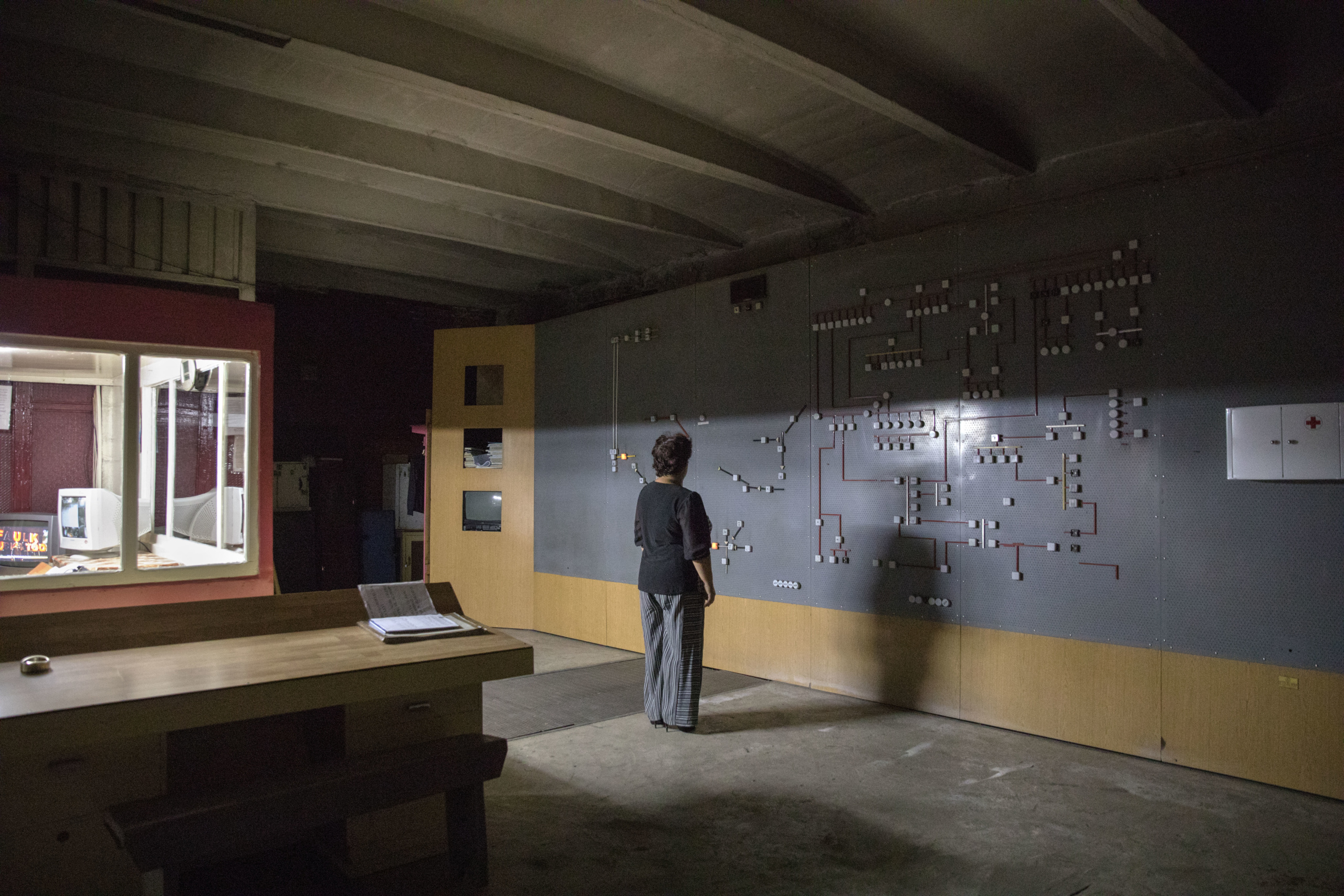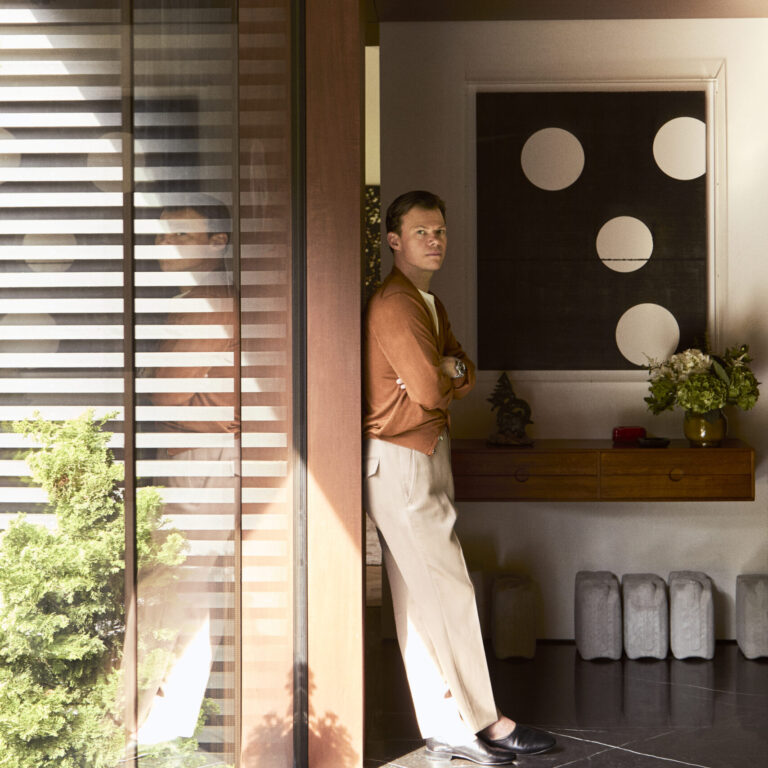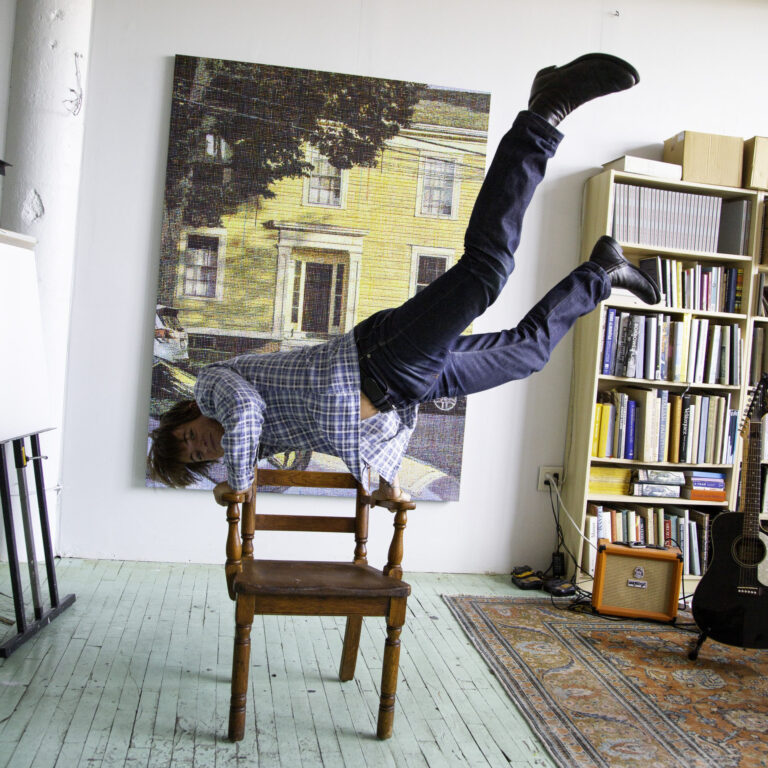
I met Bieke Depoorter’s photographs before I met their author. News had reached Magnum’s New York office, where I worked at the time, that one of the cooperative’s new nominees was a young Belgian who had submitted a series of images born from three months spent traveling the Trans-Siberian Railroad, sleeping in a different stranger’s home every night. I remember my colleagues and I poring over the what work we could find on the internet, not just because it was our job to familiarize ourselves with the new nominee, but because the project’s description piqued our curiosity—what kind of photographs does a premise like that produce?
The word that began to get thrown around the office was “intimacy.” The scenes were “intimate.” The mood was “intimate.” In fact, this descriptor often comes up in writings about Depoorter’s work, likely because her images, especially those taken early in her career, capture subjects in their homes—private selves in private moments in private spaces. But what makes these photographs uniquely disarming is that they achieve a level of intimacy that seems like it should be impossible. How could a person appear so comfortable, unguarded and vulnerable with a stranger in the room? How could a moment look so unperformed with a camera present?
At first, I assumed that the answer to these questions was simply that Depoorter must have a knack for fading into a space, that when she endeavors to make pictures, she first metamorphoses into a fly on the wall. I thought her subjects behave as if no one is watching because they momentarily forget that someone is. Having gotten to know both the photographs and their author, I now see that this couldn’t be further from the truth.
Although I met Depoorter in 2012, it wasn’t until I left Magnum and we ended up collaborating as writer and photographer on the project To Get Drunk On Cold Water that I witnessed her out in the world making pictures. We were part of a group of artists invited to Romania by the Eidos Foundation to make work as the country celebrated the 100th anniversary of its unification in 2018. Depoorter and I traveled around the Carpathian Mountains collecting scenes, environments, characters and narratives from the world as we found it, and then synthesized this material as if it was all sourced from a single fictional Romanian town.
With a notebook in my hand, I got to watch the way Depoorter moved with a camera in hers: gently, tactfully, quietly but never trying to, as I had imagined, disappear. Just the opposite, actually—she was unapologetically present. At some point on our trip, I asked her about this and she responded, “How could I disappear? I’m in the room. If I was not there, the scene I’m photographing wouldn’t be happening the way it’s happening.” It’s this mentality, this deliberate shirking of the concept of photographer-as-witness, that allows Depoorter to achieve the “intimacy” that her pictures are known for.
In Romania, I did my best to employ a similar approach, amassing material with the knowledge that even if I’m in a deeply observational mode, I’m still a participant, that my presence, inherently unavoidable, is something to work with, not against. It’s a subtle shift but one that I think the people I met could feel in their bones. The resulting body of work is a series of photographs by Depoorter and text vignettes by me that blend reportage and fiction. The hope was to point to the fact that a country, a people, a culture is never one thing, and any attempt to holistically capture what is infinitely nuanced will land in the realm of story.
Craving more culture? Sign up to receive the Cultured newsletter, a biweekly guide to what’s new and what’s next in art, architecture, design and more.










 in your life?
in your life?

